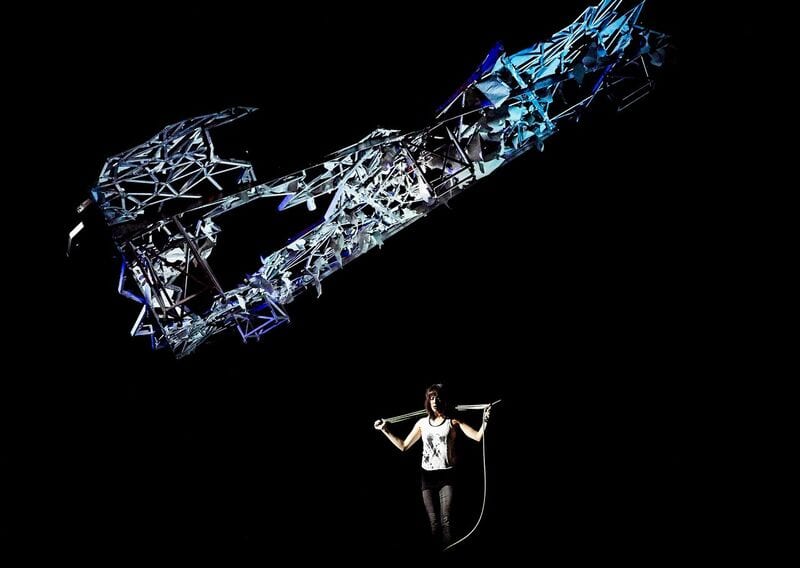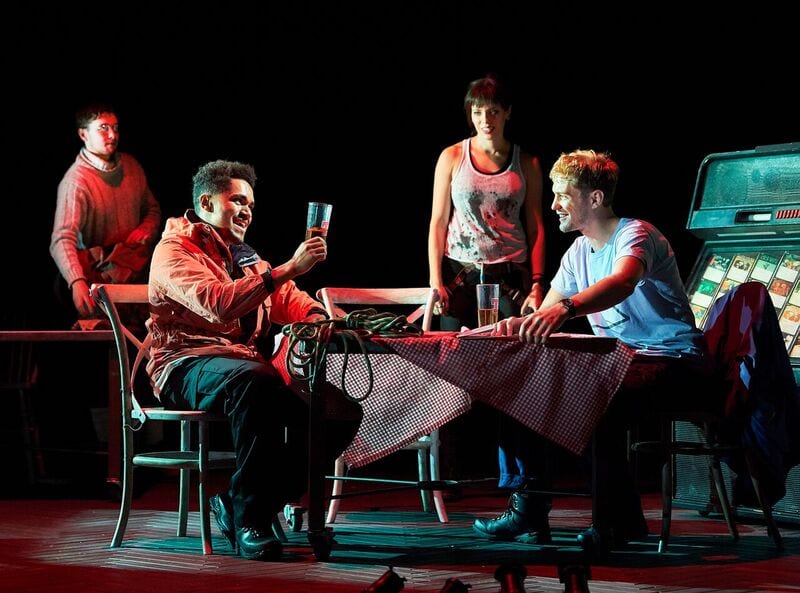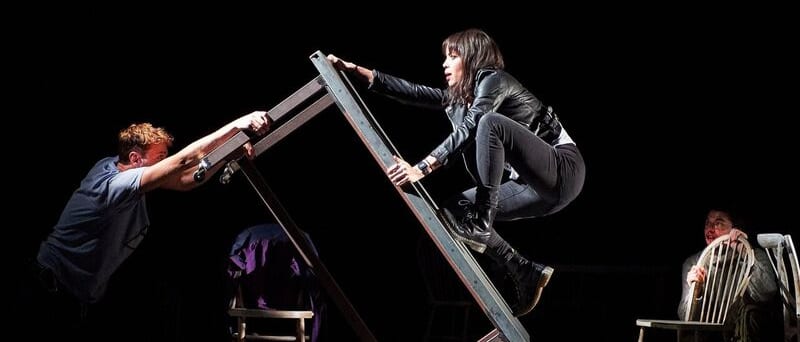Anyone who has read Touching the Void, or seen the documentary, would be forgiven for thinking it would be impossible to bring the story to life on stage. Most of it takes place several thousand metres up on the mountain of Siula Grande in Peru, and follows climbers Simon Yates and Joe Simpson during their effort to ascend the mountain’s previously unclimbed west face. The expedition lurches into disaster when Joe suffers a horrendous broken leg, and much of the rest of the story follows his desperate efforts to survive, in intensely challenging circumstances, alone.
Between them, David Greig, Tom Morris and the rest of the production’s creative team have done a superb job of bringing Touching the Void to the stage. The set designs at the Lyceum are rarely less than exceptional, but in conjuring 20,000 feet of mountain, a crevasse-riddled glacier and a pub in Glencoe from nothing more than a paper-covered steel frame, three tables and some chairs, designer Ti Green has truly outdone herself.

The adaptation of the text has also been sensitively and intelligently done. The book has three characters; Joe (played by Josh Williams), Simon (Edward Hayter) and their companion Richard (Patrick McNamee). The addition of the character of Joe’s sister Sarah into the play (Fiona Hampton) proves a useful route into the climbing world during the first half for the audience, even if it does make for the slightly uncomfortable sight of three men explaining matters to a lone woman.
It is in the second half where her role really comes to life. Much of the book takes places alone with Joe after the accident, which may have made for unremittingly depressing or even tedious theatre. However, Sarah gives form to the voices in Joe’s head that keep driving him on, thus giving otherwise solitary scenes an air of bleak humour and drama, as their sibling rivalry conjures Joe’s fight with his inner demons.
The play doesn’t just tell the story of Joe’s fight to survive, it also does a good job unpacking some of what drives climbers to undertake their exhilarating, lethal sport. Joe delves into the psychology of climbing frequently in his books, so it is important that the production also explores this aspect of Touching the Void.

Throughout, climbing is portrayed as a rhythmic dance, with each move flowing from the last with beautiful inevitability. It is an addiction, as compelling as heroin, something that drives its devotees to always move onto a bigger mountain, a more intense high. The question is not ‘why climb?’, but rather ‘why not climb?’ Why not get away from the dreary, complex challenges of jobs, taxes or mortgages and instead lose yourself in the pure air of the mountains where the only question is life or death?
For non-climbers, of course, part of the answer to ‘why not?’ is Joe’s story itself, and Williams wrings every ounce of agony, fear and loneliness from Joe’s predicament for the audience. The breaking of his leg is a visceral, wince-inducing moment, and every subsequent blow it receives is accompanied by his agonised screams and cringing from the audience. For the audience though, sitting through Joe’s screams is worth it, for Touching the Void is, beyond the pain and the loneliness, a tale of survival well worth seeing.

